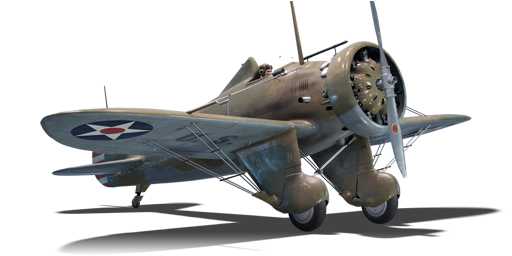



The P-26 was one of Boeing’s first monoplane aircraft and was quite advanced at its time. It was relatively fast thanks to its all-metal construction and the R-1340, a 9-cylinder radial engine that produced around ~550 HP. It was an extremely successful engine and was quickly innovated from originally making a measly 400 HP to almost 600 HP thanks to better fuels, forged engine parts, and improved cowlings. The P-26B was fitted with a fuel-injected version of the Wasp and landing flaps that greatly reduced the dangerous landing speed from 82 mph (131.2 km/h) to 73 mph (116.8 km/h).
Introduced since the start of the Open Beta Test before Update 1.27, the P-26B-35 is a decent aircraft. It has an ok top speed of ~235 mph (377 km/h) which can outrun some bi-planes but, more modern monoplane aircraft are easily able to outrun and catch the P-26B. The P-26B is armed with 2 nose-mounted 7.62 mm machine guns and can drop two 100 lb bombs. It can also turn decently well however bi-planes are far superior in this department. Although the P-26B-35 is a very old aircraft, it’s quite capable against relatively newer machines.
flaps
flaps
flaps
brake
control
| Belt | Belt filling | Armor penetration (mm) at a distance: | |||||
|---|---|---|---|---|---|---|---|
| 10 m | 100 m | 500 m | 1000 m | 1500 m | 2000 m | ||
| T/AP/AP/AP/I | 13 | 12 | 7 | 3 | 2 | 0 | |
| T/AP/I | 13 | 12 | 7 | 3 | 2 | 0 | |
| AP/T/T | 13 | 12 | 7 | 3 | 2 | 0 | |
| AP/AP/I/I | 13 | 12 | 7 | 3 | 2 | 0 | |












Flight performance | |
|---|---|
Survivability |
|---|
Weaponry | |
|---|---|